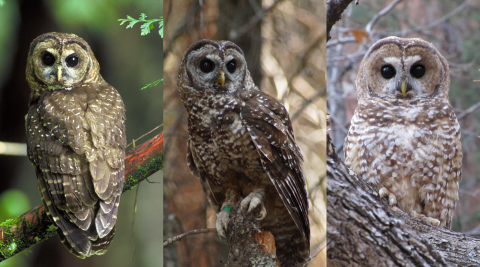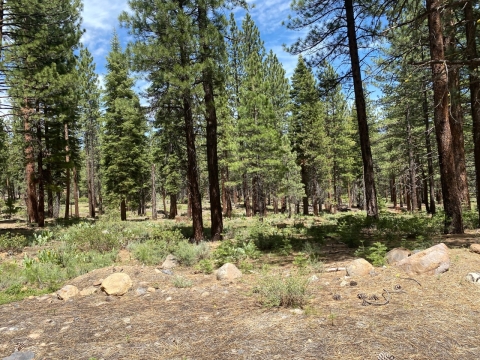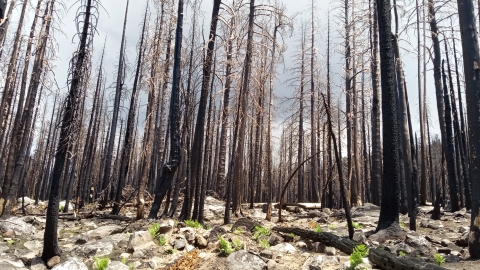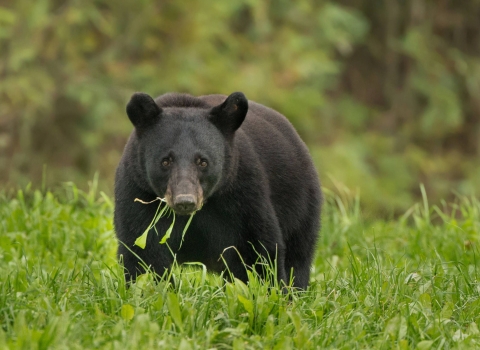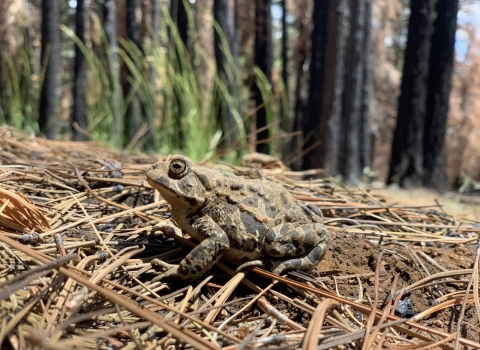There are three subspecies of spotted owl (Strix occidentalis) that live in the western United States – the northern spotted owl, the California spotted owl and the Mexican spotted owl. Last week, the U.S. Fish and Wildlife Service proposed to give the California spotted owl protection under the Endangered Species Act. If the action is finalized, all three subspecies of spotted owl will have ESA protections. While the three subspecies have some similarities, they are unique in where they live, the type of habitat they prefer and the threats they face. Whooo’s ready to learn about spotted owls?
Do they look different?
Spotted owls, in general, are chestnut brown with white spots on their body and white bands across their tails. Males and females look very similar, but females typically weigh 10 to 20 percent more than males. The spotted owl has a large circle of feathers around its eyes, known as a facial disc, and does not have ear tufts. The Mexican spotted owl has the largest white spots of the three subspecies and is also the smallest.
“When I first started studying spotted owls, I was surprised how challenging it was to find them when they’re nestled immediately next to the trunk of a pine tree with its puzzled bark. A coworker would say, look, right there, but it took some time to train the eye to see,” said Stephanie Eyes, senior wildlife biologist with the Sacramento Fish and Wildlife Office.
Where do they live?
The northern spotted owl’s range extends from southwest British Columbia through the Cascade Mountains, coastal ranges and forested lands in Washington, Oregon and California coast.
The California spotted owl is found across California and Nevada, but this subspecies is divided into two groups that have different DNA and are separated by enough distance that there’s no possibility for breeding between the groups. We call each group a distinct population segment (DPS). The Coastal-Southern California DPS is found along California’s coast from Monterey County to San Diego County. The Sierra Nevada DPS is found in California’s Sierra Nevada range from Lassen County to Kern County.
Mexican spotted owls are found across Arizona, Colorado, New Mexico, Texas and Utah. They are also found in Mexico through the Sierra Madre Occidental and Sierra Madre Oriental.
What type of habitat do they live in?
The northern spotted owl generally relies on older forested habitats often referred to as “old growth.” These forests have a variety of big trees with branches and leaves that prevent 60 to 90 percent of sunlight from reaching the ground. Many of the trees have cavities and broken tops, which the owls like for roosting and nesting. These forests also have fallen trees and other woody debris on the ground, as well as some open space below the canopy for the owls to fly.
The California spotted owl likes a little more diversity in its habitat. This owl likes forests with a mix of mature or old growth and younger trees, and a variety of tree types such as pine trees and oak trees. Together, these trees provide layers of branches and a canopy that allows 40 to 60 percent of the sunlight through.
“The California spotted owl is found in forests that have a combination of densely forested areas that are good for nesting and more open spaces, which are good for hunting,” said Eyes.
The Mexican spotted owl nests and roosts in forested areas that are similar to the California spotted owl, but they also are found in steep, rocky canyonlands and riparian riparian
Definition of riparian habitat or riparian areas.
Learn more about riparian habitats.
Is each subspecies listed under the Endangered Species Act?
While the Service just proposed to list the California spotted owl, the northern spotted owl and the Mexican spotted owl have been listed for some time. The northern spotted owl was listed as a threatened species in 1990. The Mexican spotted owl was listed in 1993 as a threatened species. The Service proposed to list the Southern-Coastal DPS of California spotted owl as endangered and the Sierra Nevada DPS as threatened.
What are the largest threats to spotted owls?
While wildfire is a natural part of spotted owl habitat, in recent years, large scale, high-severity wildfires fueled by drought have destroyed hundreds of thousands of acres of forests across the western United States. High-severity fires burn with high heat, climb into and remove the tree canopy, and can scorch the soil and tree roots. At a large scale, high-severity fires can be incredibly damaging to wildlife and the ecosystem.
Large scale, high severity wildfires are the largest threat to California spotted owls and Mexican spotted owls. These fires displace owls into other areas and force them to establish new territories often in lower-quality habitat.
“After large-scale high-severity wildfires, California spotted owls can find places to perch, but they can’t find good places for nesting,” said Eyes. “Just like us, if they don’t have a roof over their heads, they’ll leave.”
The other major threat to spotted owls is the barred owl. Northern spotted owl populations are in serious decline due to competition from the invasive and non-native barred owl, along with past and ongoing habitat loss. California spotted owls face a similar risk from barred owl competition as barred owl populations continue to expand southward.
What can I do to help the owls?
We’ve all heard, “Give a hoot, don’t pollute!” but let’s add, “The forest situation is dire, don’t start a fire.” Nationally, almost 9 out of 10 wildfires are caused by humans. These preventable wildfires threaten lives, property and our precious natural resources. Whether you’re a first-time visitor or a public land pro, you play a valuable role in preventing wildfires and protecting our natural resources.
You can do your part to prevent forest fires by:
- Avoid any activities that involve fire or sparks when it’s hot, dry and windy.
- If allowed, Build your campfire in an open location and far from flammables.
- Douse your campfire with water until it’s cold
- Keep vehicles off dry grass
- Make sure you never operate equipment that produces sparks near dry vegetation. Even the smallest spark can trigger a large fire. Vehicles and equipment can shoot sparks from their exhaust. Always clear the area around your workspace. This area should be even larger if it is windy and dry.
Learn more about preventing wildfires here: https://www.doi.gov/blog/10-tips-prevent-wildfires

